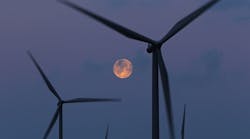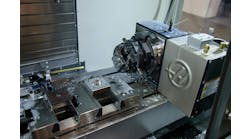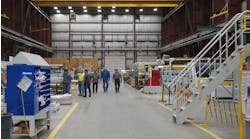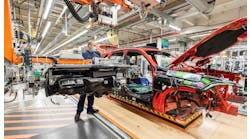The shakeout in wind turbine manufacturing industry is starting to produce winners and losers after increasing competition gutted margins. Wind is one of the lowest-cost forms of energy generation and getting cheaper, with turbine prices down more than 50% in the past decade. That has hurt profit and spurred gloomier market outlooks from wind machinery makers from General Electric Co. to Vestas Wind Systems A/S.
Some companies are weathering this better than others. GE said last month that its renewables unit’s operating profit fell 72% in the the third quarter even though it sold more units. Vestas maintained its full-year outlook despite missing some earnings estimates in the third quarter. Siemens Gamesa Renewable Energy SA rallied after the Spanish-German company’s earnings met its 2018 guidance. Nordex SE reports on Nov. 13.
After a rough patch last year following its creation, Siemens Gamesa is recovering with focus on cutting costs both for its operations and turbines. The company had full-year revenue of 9 billion euros (US$10 billion) and is targeting savings of 2 billion euros between 2018 and 2020. It was formed in 2016 through combining the wind manufacturing assets of Siemens AG and Gamesa Corp. Tecnologica SA.
“We’re simplifying our product portfolio and at the same time targeting product affordability,” said CEO Markus Tacke. “That is, a combination of enhanced product capabilities while reducing costs at the same time.”
Around the world, about 65 governments now auction renewables projects, marking the end of the once-standard practice of handing out subsidies known as feed-in tariffs to anyone who wanted to build a project. States now plan how much renewable power they want and tender it to developers, who compete for contracts on price. Those developers are pushing all their suppliers for lower costs, starting with wind turbine makers.
“The market both went from feed-in tariffs to auctions and at the same time, volumes were squeezed, and of course, that created a bit of pressure, as we have seen,” said Anders Runevad, CEO at Vestas.
Wind economics have fundamentally changed mainly in two ways. First, orders are more sporadic, aligned with a government’s schedule rather than a developer’s. Secondly, there is a global race to the bottom on price as developers compete for a smaller pool of projects.
Both factors are impacting equipment makers, which are forced to adapt to the needs of developers or lose out on contracts.
“We continue to reduce both product and structural cost of our businesses, but pricing continues to soften faster than we can execute on cost,” a GE official said by email. The falling cost of wind energy is leading to a surge in sales as more governments create clean energy markets, according to Runevad at Vestas. Emerging economies that couldn’t previously afford wind plants are now planning and hosting auctions. “On the flipside, the increased competitiveness of wind is that we see more volume,” Runevad said. “We see a high activity level and therefore a solid revenue into next year.”
The question will be whether Vestas can translate those sales into profit. The company’s long-term operating profit margin goal is at least 10%, but this year it’s expected to be between 9.5% and 10.5%.
“It’s been really tough out there for many of the wind turbine manufacturers as prices have slumped,” said James Evans, a clean-energy analyst at Bloomberg Intelligence. “Companies that are geographically diversified, both in production and sales, are the least exposed. Vestas and Siemens Gamesa come to mind and they’re both said recently that their onshore order intake pricing is stabilizing.”
By Anna Hirtenstein




